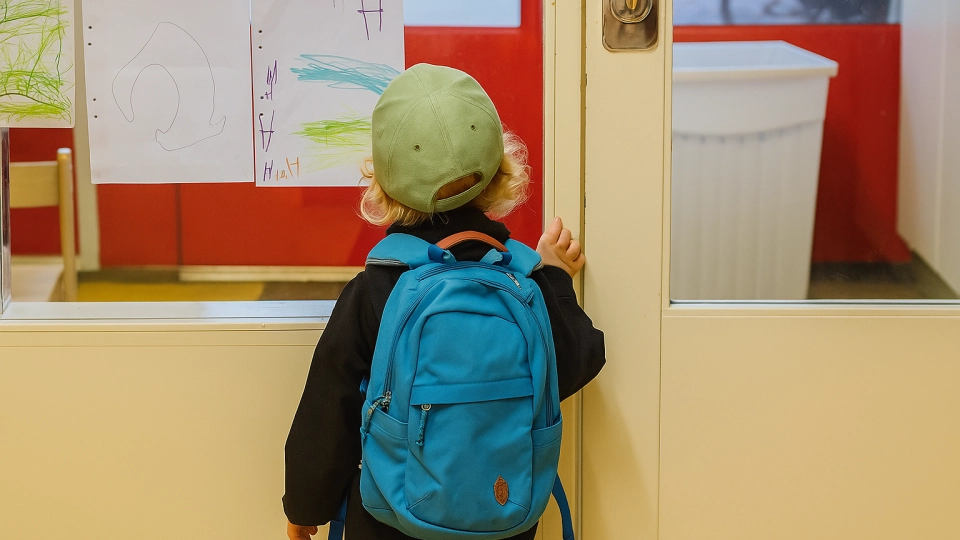Regardless of the reason for this change, it is always a new beginning that can be psychologically demanding for a child.
Good adaptation to a new school environment depends on several factors—from making the right decision and preparing the child to choosing the school and getting through the initial weeks and months.
When and why to consider switching to a new school?
The most common trigger is relocating. Another frequent reason for a transfer is persistent problems with the child's adjustment at the original school, bullying, or complicated interpersonal relationships, when parents want to ensure better mental well-being for their child.
Before deciding, consider your child's current situation at school—how they are doing academically, what relationships they have with classmates, and how they are coping emotionally with school. Carefully assess whether the transfer will bring any improvement at all. Older children in particular may be more sensitive to change.
The child's age is another factor. For example, younger school-age children usually handle transfers better because they make connections more easily and adapt to change. Teenagers may find the new situation more difficult; they often experience change very intensely—their social ties tend to be strong, so they may perceive change more painfully.
What to consider before making the final decision
Choosing the right school is a key factor in a successful transfer. The first and most important criterion is the school's atmosphere, teaching style, and teachers' approach. If your child is more sensitive and needs an individual approach, prefer a smaller school with small class sizes. For an energetic child who loves being part of a group, a larger school with a wide range of extracurricular activities may be more suitable.
Steps parents should take before the start
Announce the decision sensitively and with sufficient notice. Reassure the child that they can express their feelings, worries, or questions. The most important thing is openness and respect for the child's emotions.
Involving your child in the process of choosing the new school significantly helps reduce their uncertainty. Visit the new school together, communicate with teachers in advance, and introduce your child to at least their future homeroom teacher. This gives the child a concrete idea and a greater sense of certainty.
Have specific conversations about the change with your child. Ask about their concerns, but also about what they might like at the new school; make sure you understand their emotions. For younger children, positive stories about change or books about the first days of school work well.
How to help manage the first days and weeks
It is normal for the first weeks to be challenging. A child may initially be exhausted, irritable, or withdrawn. Patience and understanding are essential—the key is your steady support. Give your child plenty of time to adjust.
If your child finds it hard to make new friends, suggest getting involved in extracurricular activities and sports clubs, which can help broaden their circle of friends.
How the child perceives the change
A child may perceive this change as the loss of their previous sense of safety, which can trigger a whole range of emotions—from sadness and anxiety to anger or defiance. Every child's reactions can be unique, so it is advisable for parents to watch sensitively and empathetically how their child is coping emotionally.
A typical feeling a child has to deal with is sadness from being separated from friends and a familiar environment. Here it is crucial for the parent to give the child space to express emotions openly. Do not force the child to accept the new reality with enthusiasm right away. Allow them to grieve if they need to, and thus effectively close the previous chapter. Some children may benefit from a symbolic farewell to the old school or classmates, for example by organizing a small gathering with friends or creating a memory album.
Encourage activities that have a positive effect on the child's mental well-being, such as sports or art. These activities help the child relieve stress and also give them an opportunity to gain new self-confidence. Even small home rituals—for example, a daily family dinner or a short chat before bedtime—can give the child a steady sense that the world around them is in order and their family is still by their side.
If you observe long-term difficulties such as persistent sadness, mood swings, or problems with eating or sleeping, do not hesitate to seek professional help.
Remember that change is a normal part of life and, despite the initial problems, it always brings new possibilities and opportunities. If you are currently in the process of transferring your child, we wish you plenty of patience.

